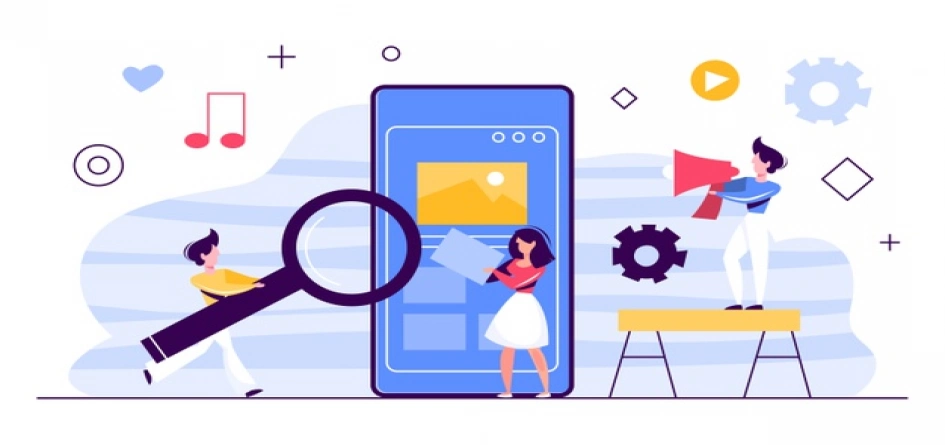

Inbound Marketing B2B is not a new term or practice anymore. Organizations today have understood and realized that outwardly pushing a brand, product, or service onto prospects in the hope of lead generation or customers does not work anymore.
Inbound marketing helps marketers develop a marketing engine that attracts visitors and converts into leads.
For B2B organizations, it is very important to convince potential buyers that you have the solution for their pain points and showcase the value long before they invest and this is what Inbound marketing does precisely. It helps marketers build trust and establish relationships with prospects.
Let’s understand if there has been any effect on the B2B customers buying patterns post the pandemic.
According to Demand Gen Report’s 2020 B2B Buyer Behaviour Study, B2B buying teams haven’t been as inactive as we may have thought during the COVID-19 crisis. This is true that 47% of the buyers have frozen their budget and delayed purchases but at the same time majority of B2B buyers are still active and more than a third say they are more active than they were pre-pandemic.
This blog post summarizes all the important components of Inbound Marketing that B2B marketers should embrace in order to create a positive impact on the business.
Even before jumping into designing your inbound marketing plan, it is important to have clarity on what do you want to achieve? The inbound marketing strategy should be aligned with the organization’s goals.
If an organization intends to achieve sales by 15%, both the sales and marketing team should have clarity on how much percentage will be contributed by the existing customers and how much should be from new customers and the teams should be assigned SMART goals accordingly. Also, measure and review performance through KPIs e.g. inbound leads generated quarterly, MQL to SQL conversion rate.
Often marketing plans because of misalignment between sales and marketing teams!
The foundation of the Inbound Marketing strategy starts with understanding your customer well.
Research about your customer and prepare a detailed buyer persona for both the decision-makers and the actual product/service users. In enterprise organizations, 99% of all tech buying decisions are made by two or more people, with buying committees having a median size of eight people. So it is really important to create the buyer personas that portrait the characteristics of the “person” you are targeting by clearly defining their background, roles, and responsibilities, key motivations, personality, goals, challenges/pain points, etc. This will be highly useful for the right messaging and positioning and ensures that your content is absorbed by the right eyes and ears.
During the awareness stage, only 19% of buyers want to talk to a salesperson and most people are eager to actually connect with a human being at the consideration stage. 60% buyers want to talk to sales only after they've researched the options and come up with a shortlist.
This infers that marketers should create and distribute relevant content at just the right time, for all the stages.
In the Awareness stage, publish content aiming at sharing information and increasing knowledge of your target customer e.g. tip sheets, briefs, blogs, guides, and overviews.
For Consideration, share in-depth content that is based on specific problems and aligned solutions such as eBooks, reports, white papers, and video demonstrations.
In the Decision stage, choose formats that help you articulate value e.g. case studies, free assessments, vendor features/services comparisons, etc.
69% of decision-makers shared that the most important reason for choosing the winning vendor over the other vendors was that the B2B vendor “demonstrated a strong knowledge of the solution and the business landscape."
Blogging is one of the core tenets of inbound marketing because it drives traffic to your website and if your content resonates with your prospects it establishes a virtual connect and certainly helps in conversion.
As per Hubspot, clients that blog 16 or more times each month generate 4.5 times more leads than clients who blog 0-4 times per month. A call-to-action should be included in every post to generate MQLs. A call to action should be strategically designed, placed, and should offer valuable content that excites the prospect enough to click and perform the desired action.
SEO should be an ongoing continuous improvement task. Search engine algorithms and rules keep changing so it’s better to ensure that the basic SEO elements are being taken care of and keep a balance between optimization and the right content. Use long-tail keywords with regular keywords to bring the right kind of traffic. Keywords should go in the title, body, URL, and Meta descriptions.
Did you know that 75% of B2B buyers and 84% of C-Suite executives use social media when making a purchase?
Honestly, B2B social media marketing might not be where you convert the greatest number of leads but is a powerful tool for building brand awareness, establishing trust, and increasing brand recall. LinkedIn has definitely proved to be working for B2B organizations.
Marketing automation helps in nurturing a prospect with the right content and messaging at the right time and organically moves them through the funnel. Reach out to leads in your funnel regularly with more information and content that answers their questions. Leverage all the touchpoints you have with each prospect, and nurture the leads through emails, automated workflows with content offers, and redirects to relevant landing pages or blogs.
Content development should always be seen as an iterative process. Don’t let your team hard work go in vain by utilizing the content only once. Repurpose your existing content into a different format (e.g., multimedia, infographics, blog articles, or even stand-alone social media posts). It gives you additional opportunities to engage prospects in the format that best aligns with their stage of the Buyer’s Journey.
Inbound marketing is a powerful mantra of business success for marketers. Implementing and practicing the above elements will help you establish a lead generation engine for your organization.